Paths Architecture
Rough Draft March 10, 2000
emrek@cs.stanford.edu
Outline
This is a quick sketch of what I think are the main points of my paths
architecture. If you're new to paths, you may also want to read an
Overview of Paths. This document is a rough
draft. All comments are greatly appreciated. Thanks!
Path Creation and Instantiation
Vocabulary:
- Partial Path: an unconnected (or partially connected) path (two
adjacent operators in a path are considered unconnected if there
is a type mismatch between their inputs and outputs).
- Logical Path: A completely connected path.
- Physical Path: A logical path whose operators have been assigned
to hosts for execution.
- Path Instance: A running path. Once a path is running, information
about it (it's member operators, etc) is not explicitly maintained, and
must be discovered through introspection.
The process of creating a path is divided into three stages:
- The Path Finder: Given some request for a path, will generate a
a logical path. A request can take the form of a partial path, or a
query in a higher-level language.
- The Path Placer: Given a logical path, a path placer will assign
each operator to run on a specific host. A path placer may choose o
assign operators to run only on a single-machine, within a cluster,
or across the wide-area. Generates a physical path.
- Path Dispatcher: splits and dispatches the physical path to appropriate
hosts. Each host will receive instructions for implementing that part
of the path assigned to them.
- Path Instantiator: the path instantiator will instantiate operators
and connectors and begin data flow.
Because the path creation process is itself a path, new stages can be
added and existing stages can be replaced easily. Examples of possible
useful stages includes: adding caching operators around operators in a
logical path, parallelizing operators within a path, adding supervisor and
logging operators, and adding a higher-level query parser before (or instead
of) the Path Finder.
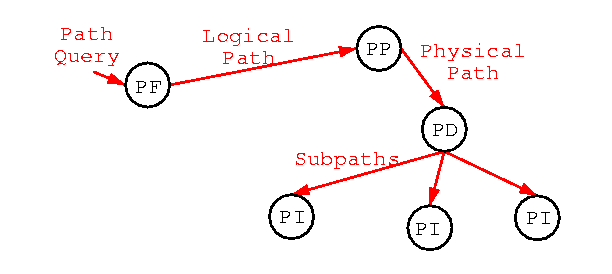 Figure 1: An outline of the "Path Creation" path.
Note: queues between operators are not shown in this figure
for clarity.
Figure 1: An outline of the "Path Creation" path.
Note: queues between operators are not shown in this figure
for clarity.
Path Execution
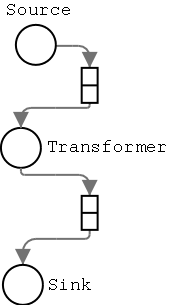
Figure 2: A simple path single-machine with source, transformer,
and sink operators. The arrows indicate the flow of data between
operators and queues.
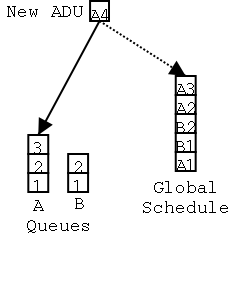 Figure 3: ADU Queues and a Global Schedule
Figure 3: ADU Queues and a Global Schedule
|
Here's a quick example of the operation of a path (see figure 1):
- The source operator generates an ADU, and enqueues it in its
output queue.
{
ADU adu = generateADU();
cfg.getQueue( "myoutput" ).enqueue( adu );
}
- When the ADU is added to the queue, the queue also adds the ADU to the
global schedule.
- The main thread in the host takes the ADU off of the global schedule. This
ADU has a reference to the queue it's in. The main thread looks up the set of
workers listening to this queue and picks one. In this example, there's only
a single worker, the transformer, listening to this queue.
- The transformer runs in the main thread's context. The operators all run
in this single thread-context. No blocking calls are allowed, though
operators are allowed to launch worker threads. There is no requirement that
an operator generate an output ADU immediately or even at all; nor do the
operator's output ADUs have to have a one-to-one relationship with input ADUs.
/* the transformer implements a receive function... */
public void receive( ADU adu ) {
ADU out = doSomething( adu );
cfg.getQueue( "myoutput" ).enqueue( out );
}
- When the transformer enqueues its output ADU, it goes through the same
process as the ADU outputted by the source operator.
- The sink operator acts just like the transformer operator, except that
it never generates any output ADUs (surprise!). A sink operator generally
displays or stores this ADU itself or communicates this ADU to some external
entity for display or storage.
|
Clusters
A basic path host is a single-node, with no networking capability built-in.
The clustering and load-balancing functionality is built on top of the path
architecture as a set of paths run by default.
The first bit of functionality that needs to be added to make a path host
cluster aware is simple communication between machines in a cluster. What
we see in figure 4 is a path that implements a simple listener and announcer.
First, the ADUListener starts listening on some TCP port for ADUs. When
it receives an ADU, it forwards it on to a named local queue. Of course, the
existence of this ADUListener has to be known by the other machines in the
cluster. So, every second, the Timer operator sends a signal to the
ADUListener, who sends the host:port announcement to the AnnounceHost operator.
The AnnounceHost operator broadcasts this message to a well-known multicast
group/port.
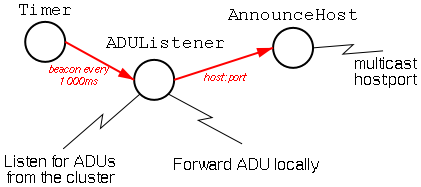
Figure 4: Listening for messages from the cluster, and
broadcasting our existence.
An AnnouncementListener operator receives these multicast announcements and
forwards the list of hosts to interested operators (for example,
the cluster-placer operator discussed in the Path Creation section would
receive a list of these hosts).
This system will be extended to support a load-balancing by adding a
"load-measurer" operator, and announcing the load on a machine along with
the host:port pair.
Fault-tolerance
Here's a quick proposal for adding fault-tolerance to a path. It's not meant
to be the perfect way to do fault-tolerance. Rather, it should illustrate how
this sort of functionality is easily be implemented in this architecture.
The basic idea is to have "Supervisor" operators listening to status messages
from operators. If these status messages fail to arrive or indicate some
failure has occurred, the supervisor will have enough information to restart
the failed portion of the path. Note that a Supervisor only has to know
about the operators it's directly supervising and their immediate neighbors.
To avoid clogging the network with a large number of status messages, the
supervisor can be co-located with the operators its supervising. If the whole
machine crashes, the Supervisor will need to be restarted as well. Since the
supervisor is itself an operator, it can be supervised just like any other
operator. For this case, we need to supervise from another machine.
Some fine details:
- Supervisors can be in a peered relationship with each other. Alternatively,
supervisors can be nested in a hierarchy.
- Supervisors can implement checkpointing via the beaconed status
messages.
- Status messages are not the only possible way of detecting failures.
Supervisors can also inspect the queues on the inputs/outputs of operators,
as well as listening to host announcements from the cluster.
- Supervisors can implement different policies for detecting and handling
faults for different paths, and even for different operators within the same
path. This extends further than telling supervisors to follow different
policies, completely different schemes (sans supervisors?) can be used for
different paths, even on the same host.
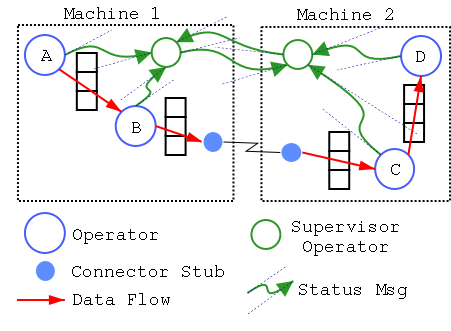 Figure 5: Extending a path for fault-tolerance.
Operators send status messages to their supervisor. Supervisors send status
messages to each other. If any operator fails, its supervisor will attempt
to restart it.
Figure 5: Extending a path for fault-tolerance.
Operators send status messages to their supervisor. Supervisors send status
messages to each other. If any operator fails, its supervisor will attempt
to restart it.

 Figure 3: ADU Queues and a Global Schedule
Figure 3: ADU Queues and a Global Schedule


